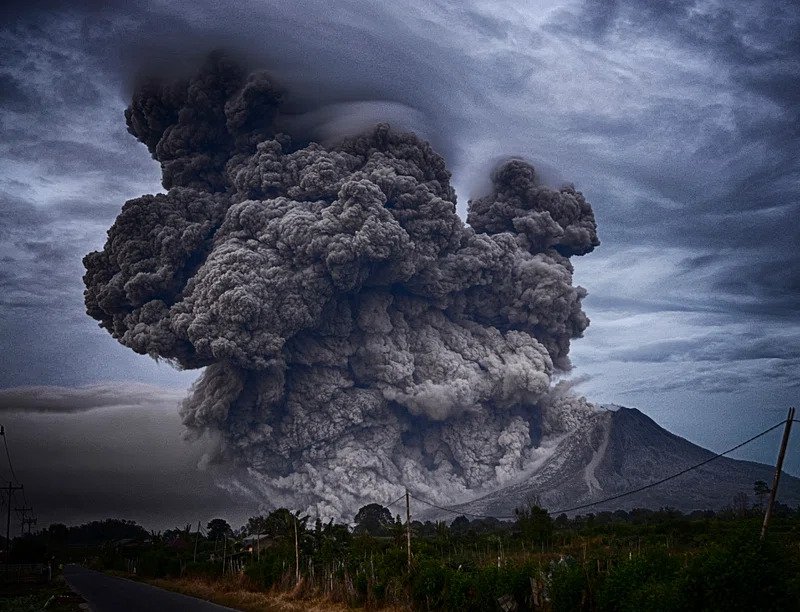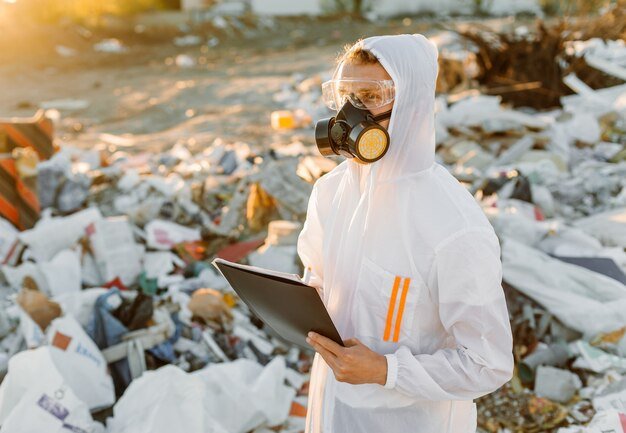What a Yellowstone Eruption Would Look Like — and Why Scientists are Careful with the Word “If”
Yellowstone sits on a huge volcanic system, and people naturally worry about a “supereruption.” In simple terms, there are three broad kinds of eruptions scientists consider at Yellowstone today: small hydrothermal explosions (hot-water blasts and geyser-related blasts), slower lava flows, and — much more rarely — very large, caldera-forming explosive eruptions that produce enormous volumes of ash. According to the U.S. Geological Survey (USGS), Yellowstone has produced three very large caldera-forming eruptions in the past 2.1 million years, but those events are spaced so widely that scientists say the system is not “overdue.”
A modern caldera-forming event — the kind that appears in sensational headlines — would not be a quick one-day blast like Mount St. Helens in 1980. Modelling done by USGS scientists shows a supereruption could build a giant umbrella cloud that towers tens of kilometres into the atmosphere and then spreads ash in a nearly radial pattern, not just downwind like most smaller eruptions. A team led by Larry Mastin used ash-transport models that show an eruption lasting days to weeks could push ash hundreds to more than a thousand kilometres, producing thick deposits nearby and measurable dust across much of North America.

Immediate Human and Infrastructure Impacts Across the Continent
The first, most obvious damage would be local and regional — heavy ash near the park itself and across the northern Rockies. Model runs predict ash thickness of decimeters to meters in the northern Rockies, centimetres to decimeters across broad swaths of the central U.S., and light dusting even at great distances, depending on wind and eruption style. The USGS modelling found that a single large explosive event could produce ashfall severe enough to collapse weak roofs, foul engines, and contaminate water supplies across states.
Those physical effects cascade into daily life. Ash makes roads extremely slippery, damages vehicle intake and braking systems, and, when wet, turns city street ash into cement-like slush that clogs drains and sewers. Airports would be at high risk: volcanic ash grinds metal, clogs sensors, and can cause jet engines to fail. The 2010 Iceland eruption Eyjafjallajökull gave a live demonstration: at the height of the plume, much of European airspace closed and airlines lost huge portions of capacity for days — a real, painful economic hit and a logistical nightmare for travellers and freight. A report by IATA in 2010 detailed how air traffic ground to a halt and supply chains stalled.
People who have lived through volcanic ash events describe a particular kind of fear and practical work: clearing roofs, protecting crops, and keeping children and the elderly inside until public agencies can assess water and air safety. According to Wired, after Mount St. Helens erupted in 1980, communities in Washington and Oregon faced ash fall, crop losses, and ruined machinery; survivors still talk about the months of cleanup and the sudden, eerie landscapes left behind.
The Longer Climate, Crops and Global Ripple Effects
Beyond immediate damage, very large eruptions can change climate and food production — although the degree and duration are uncertain. The classical example is Tambora (1815), whose huge sulfur and ash injection into the atmosphere helped trigger the “Year Without a Summer” in 1816, with crop failures and food shortages across Europe and North America. A detailed scientific review used Tambora as a natural experiment to understand how stratospheric aerosols drive surface cooling and weather disruptions.
That historical lesson matters, but recent research has complicated the simple “big eruption = long global freeze” story. A 2024 NASA-supported study looked at extreme eruptions and the behaviour of sulfate aerosols and found that, under some conditions, sunlight-blocking particles may not cool surface temperatures as much as older models suggested — aerosol chemistry and cloud interactions can produce complex outcomes.
The consequences for food production and global economies are significant and concerning: even modest, short-lived cooling can reduce growing seasons in sensitive regions, affect rainfall patterns, and spell disaster for already fragile food systems. The USGS warns that agricultural disruption, especially in the first two to three years after a large eruption, would be an immediate, life-threatening problem for millions, depending on how the eruption unfolds and where ash and aerosols travel.
The modern world adds new vulnerabilities. A 2025 study found that major volcanic eruptions can suppress global wind speeds and thus reduce wind-energy output for years in some regions — an unexpected knock-on for energy systems that rely on predictable wind patterns.
Lessons From Real Eruptions and Clear Steps Communities and Governments Can Take
Real eruptions give clear, tested lessons: prepare water filtration, protect critical infrastructure, plan for food distribution, and keep airlines and power grid operators coordinated with volcano observatories. The USGS and Yellowstone Volcano Observatory (YVO) spend years building models, monitoring ground movement and earthquakes, and talking with emergency managers about response plans.
Experts who work on these problems speak plainly. Larry Mastin, who co-developed ash-dispersion models used for Yellowstone scenarios, has explained that a supereruption “creates its own winds” and can drive ash in ways that make simple downwind planning inadequate; modelling helps emergency managers prepare for many possible wind and eruption scenarios.
Mike Poland, Scientist-in-Charge at YVO, repeatedly emphasises monitoring and risk communication: the most likely events to occur in Yellowstone in our lifetime are small hydrothermal explosions or lava flows, not a continental-scale supereruption, and that steady, transparent communication saves lives by building public understanding without panic.
A scientific modelling paper used today’s atmosphere and winds to produce these kinds of distributions for a 330 km³ ash-yield scenario and warned that the umbrella cloud can push ash upwind and far beyond typical expectations. The USGS modelling found these deposition patterns in simulations.
Conclusion: What Ordinary Citizens and Officials Can Do Now
Emergency planners and citizens both gain a lot from the same basic moves. Local governments should update continuity plans for water, food, medical supplies and power, and coordinate with national observatories for rapid information flows. Households can assemble practical kits that include N95 masks (ash is respiratory-irritating), sealed water, battery radios, and roof-clearing tools. Farmers should work with extension services to plan for crop losses and seed storage. These are the same basic resilience actions emergency managers recommend for hurricanes and floods, adapted to ash and aerosol risk.
Remember what history and science together teach: the odds of a Yellowstone supereruption in any given year are extremely small, but the consequences — depending on size and winds — could be large and long-lasting. Science reduces panic by turning unknowns into probabilities and plans. Monitoring continues, models improve, and practical emergency steps can sharply reduce suffering if a rare event does happen







